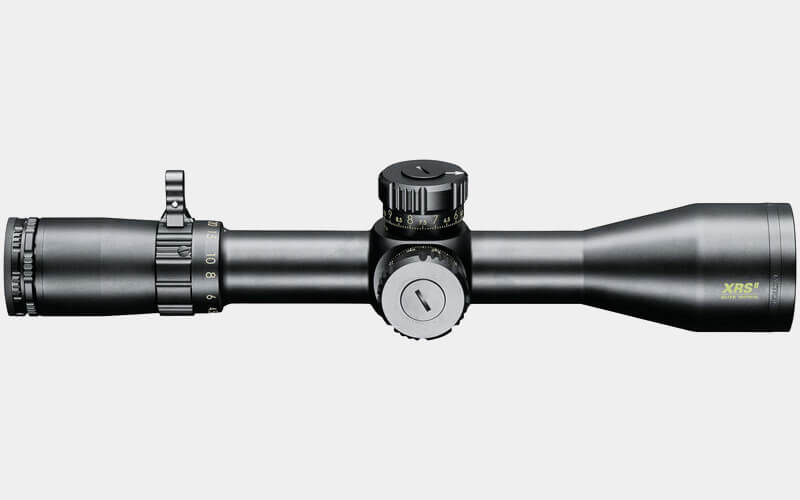When shooting for precision there are a lot of things to think about. There’s gear, wind, elevation, barometric pressure, the curve of the earth, etc. The bottom line here is, it can be as complicated as you want to make it. The physics behind bullet drop and friction in the air and all that kind of stuff can drive you nuts if you let it.
But on a simpler level, there are five basic things that you need to worry about first if you plan to shoot at long distances.
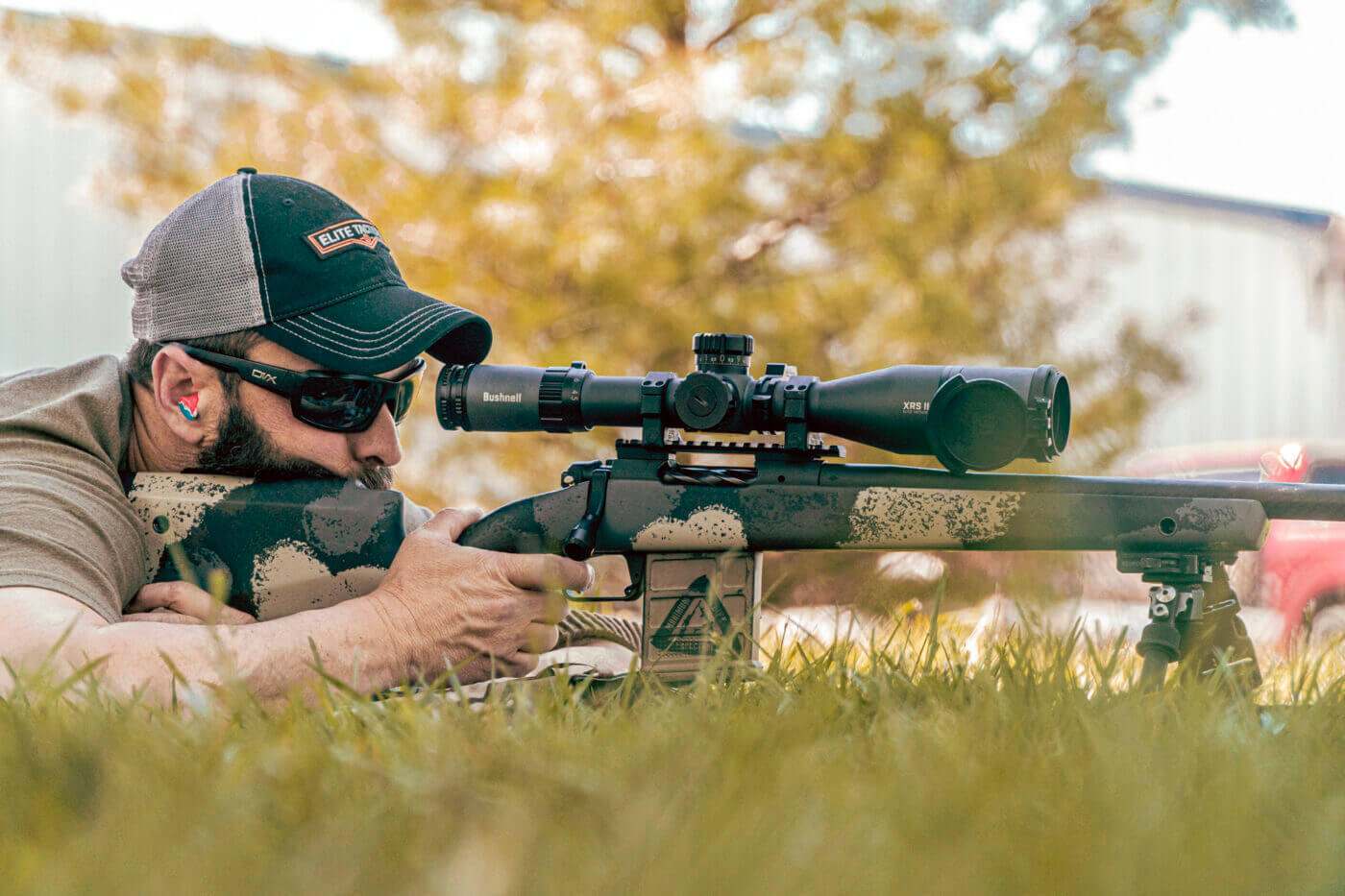
Grant LaVelle, the chief instructor at Maximum Life Expectancy, used to have to travel to different sniper schools as part of his yearly training regime. As a result, he’s picked up a few things along the way. One thing he has picked up is what he refers to as a “pre-flight” checklist to get ready before you start blasting away. Here’s that list:
- Natural alignment to target
- Have good eye relief
- Focus on the reticle
- Even trigger pull
- Shoot on empty lungs
Natural Alignment to Target
This one sounds kind of obvious but bear with me. Grant teaches it this way, and it can be really helpful. At first, he likes to set his rifle down where he’s going to shoot and have it pointed at the target. Then he likes to get behind the rifle and go through a confirmation process.
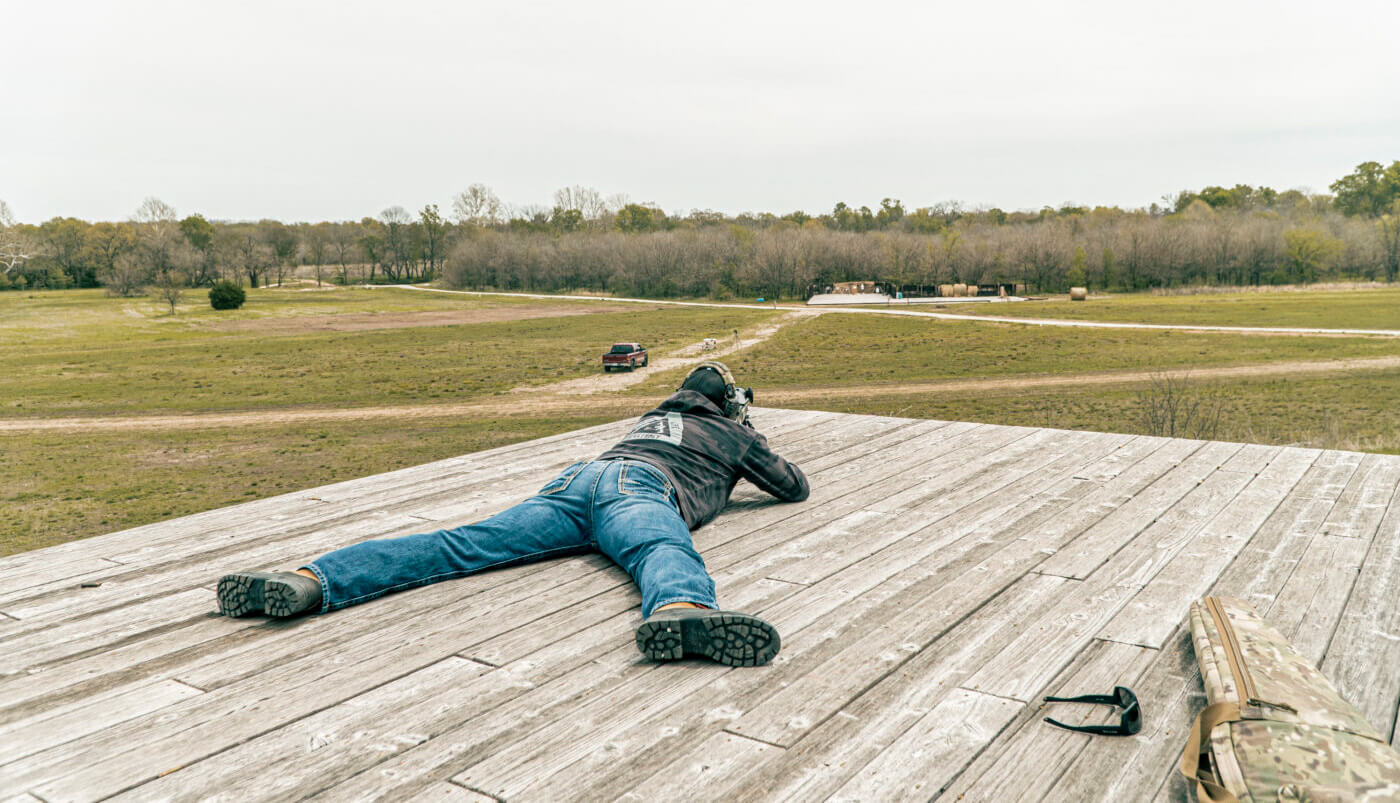
While behind the rifle, you get ready to aim, take a few deep breaths and close your eyes and settle in. If you are not naturally pointed at the target when you open them again, then you might not have a natural alignment. When you’re shooting distance shots, you want as much of you out of the equation as possible and you want the rifle and physics to do the rest of the work. So, if there is any resistance from the way you are positioned, fix it first.
Have Good Eye Relief
This next step should be taken care of before you go shooting, and it kind of depends on your equipment. Good eye relief is important. If you see any scope shadow at all, you have to get that out of there.
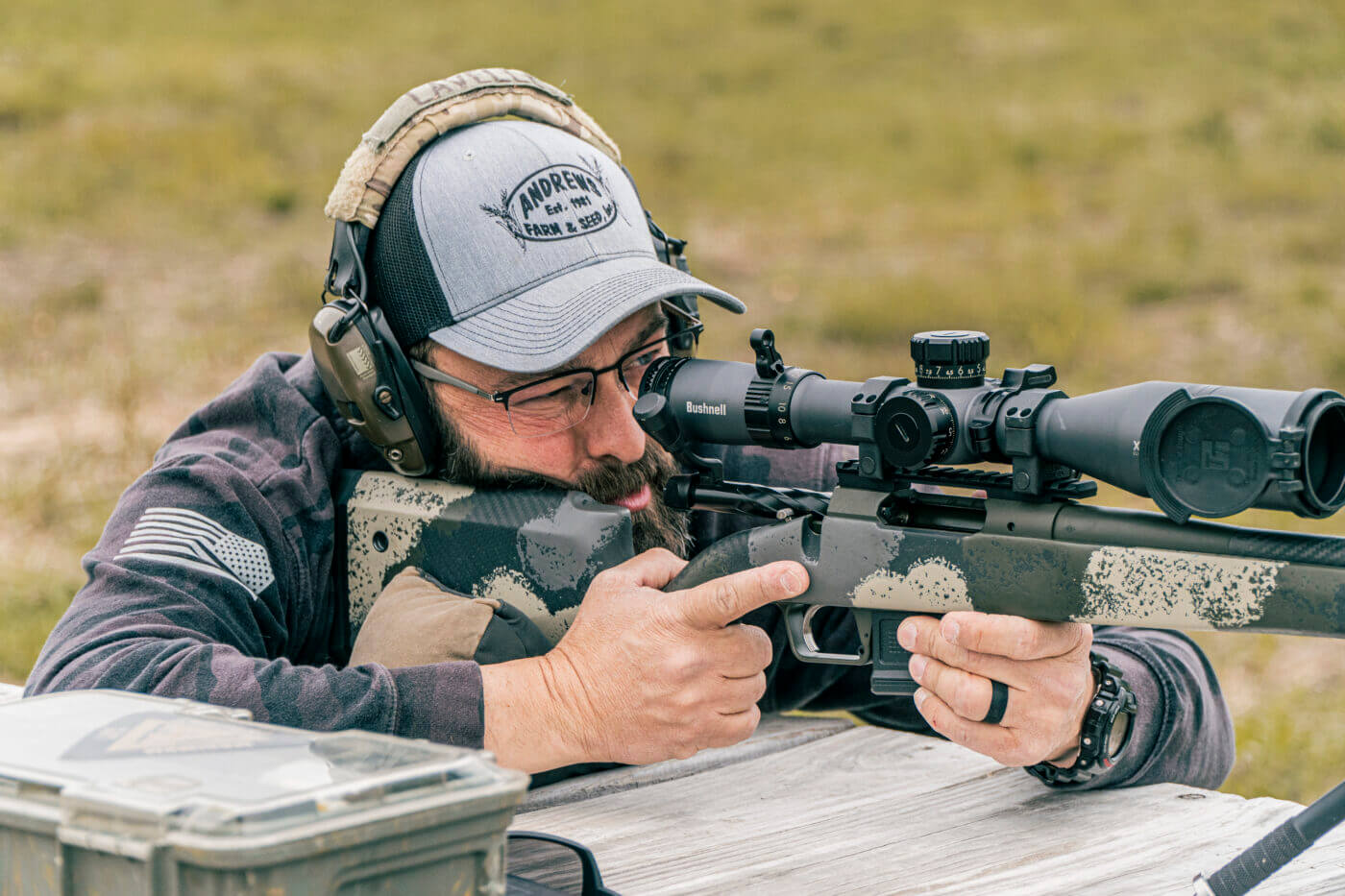
If you have to move your scope or adjust your stock or get higher or lower rings, just find the solution and make the change. You are going to have an uncomfortable, miserable time shooting if you see scope shadow all day long. To fix it, you have to crank your neck in an uncomfortable position, and that is not helpful for accurate shooting.
Focus on the Reticle
Just like when you are shooting with iron sights on your pistol and you focus on that front sight, this step is no different. Once you are framed up on the target, shift the focus of your eyes to the reticle.
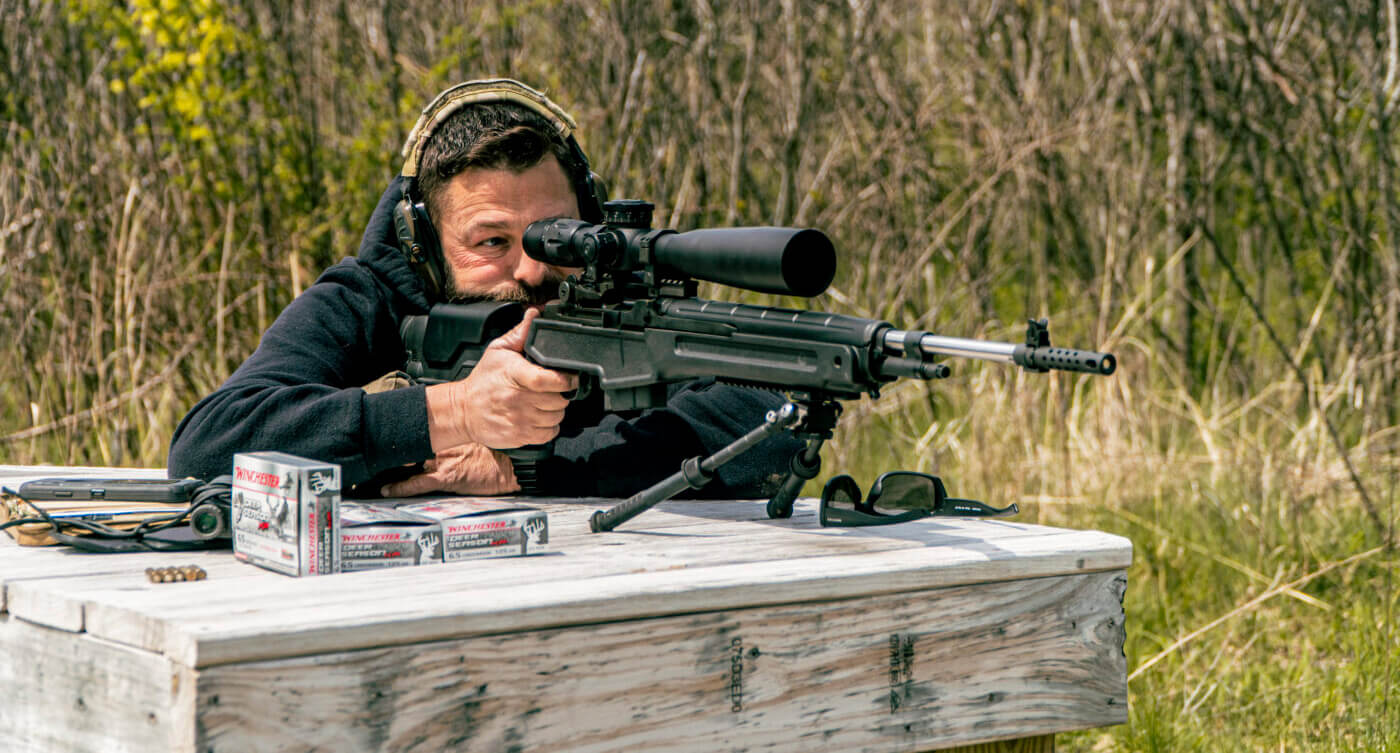
You want to focus on the crosshairs as you squeeze the trigger. You should see the crosshairs in focus and the target just slightly out of focus. This ensures your reticle is where it needs to be.
Even Trigger Pull
Anytime we are shooting, we can’t just slap the trigger and hope for the best. I mean, you can, but your group will be awful. As a shooter, you want a nice even trigger pull to the rear. That doesn’t necessarily mean it has to be slow. Although pulling the trigger slow helps with that, some amazing shooters can do it on command. But if time allows, a slow, even-pressure pull of the trigger straight and steady to the rear is essential to hit the target.
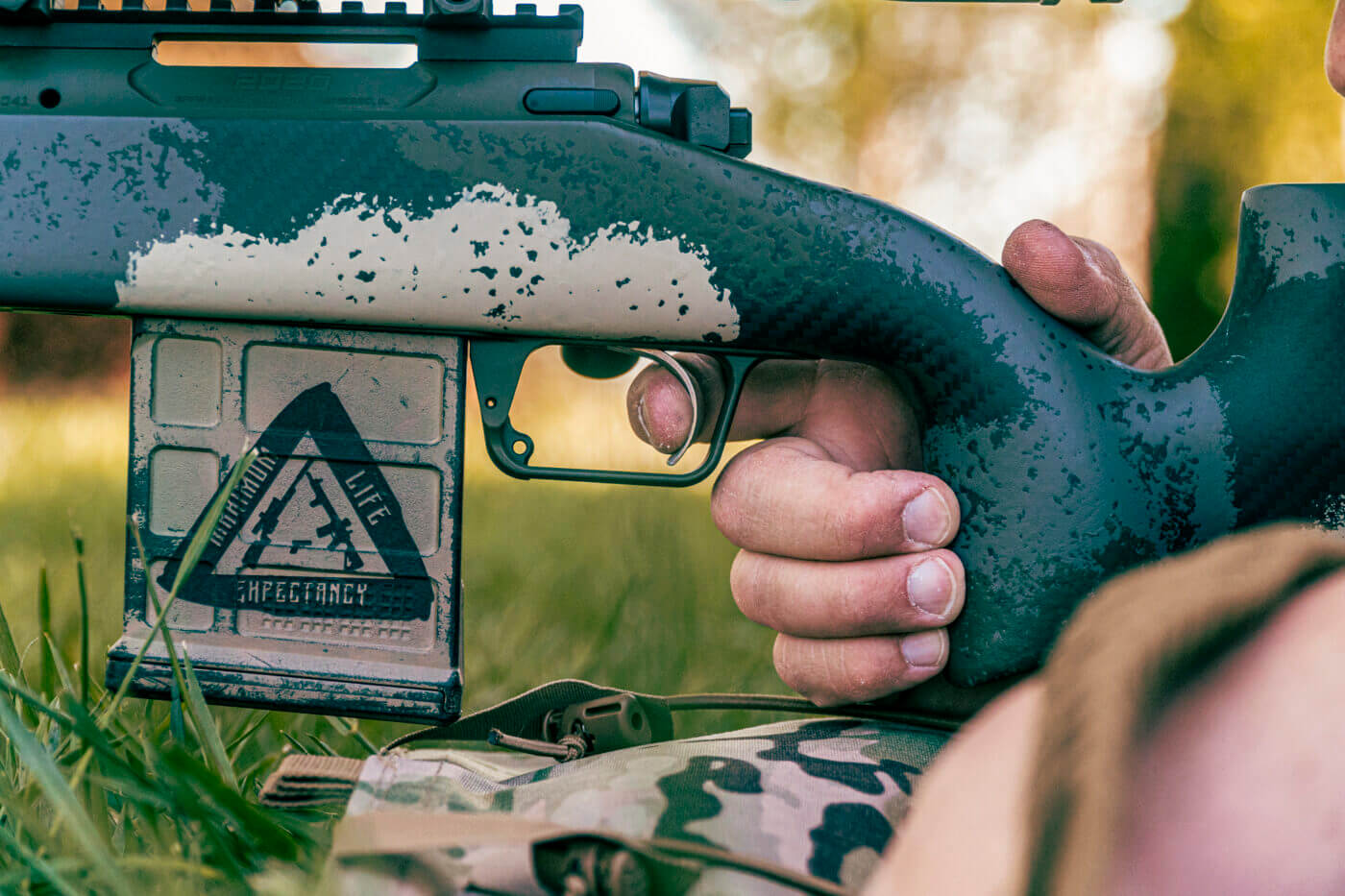
If you move the gun a smidge during this process, by the time the bullet reaches 1,000 yards that smidge could be magnified to several feet. Remove as much human error from the equation as you can and let the gun and cartridge do the work.
Shoot on Empty Lungs
Breathing is important for distance shooting. One of the popular and not-so-great methodologies out there is to take a deep breath and then hold it as if you are going underwater and you want to hold your breath for as long as you can. Again, not really helpful. With your lungs expanded with a full breath, your torso is bigger and, as you lose your breath, your torso shrinks. This throws off consistency, and consistency is what we are all about in the distance game.
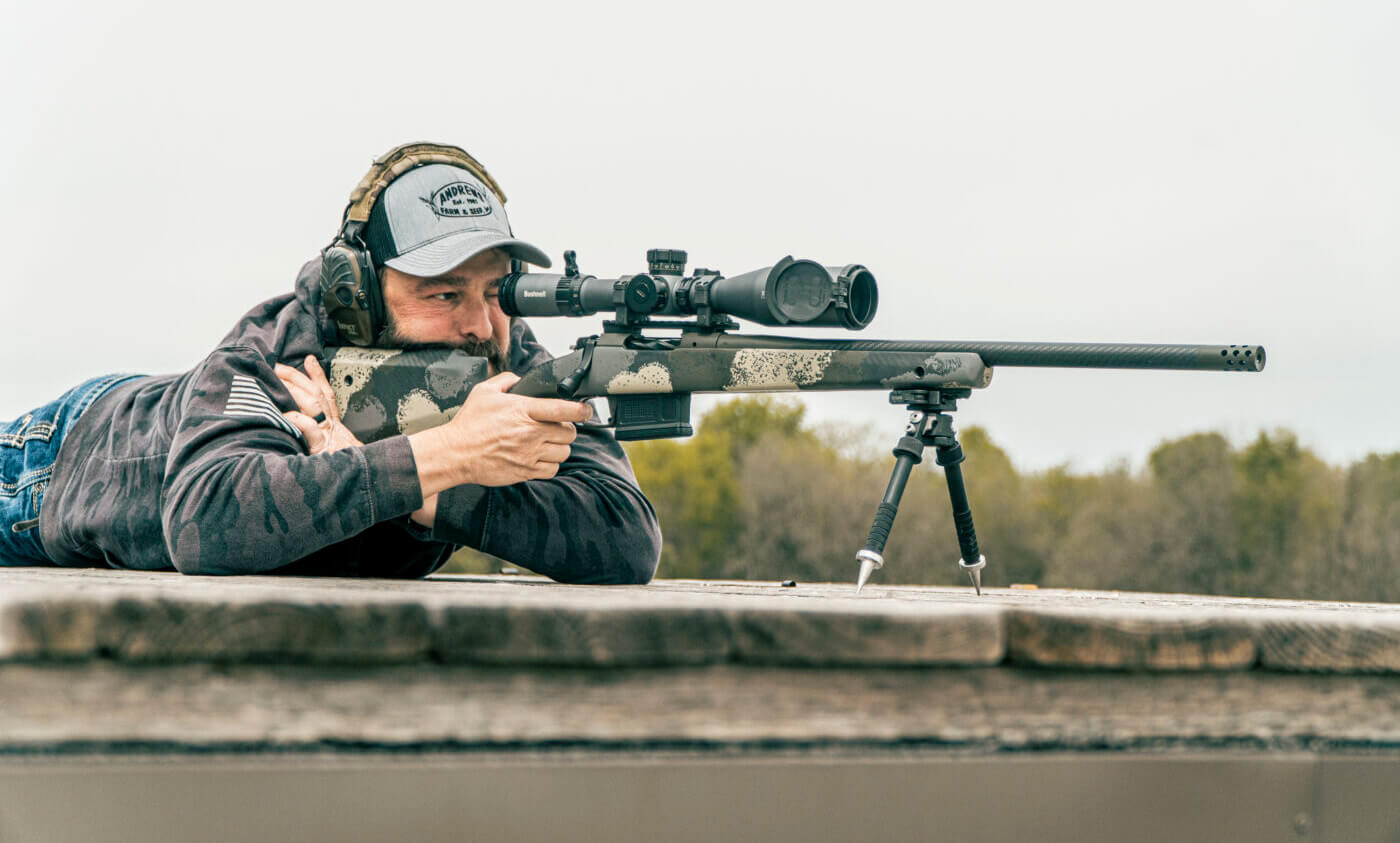
The method Grant prefers is to shoot in that natural respiratory pause of our breathing cycle. So, calm down, take a couple of deep relaxing breaths to calm your breathing and your heart rate. Then, while you exhale as your breath has escaped your lungs and while your lungs are empty, squeeze and fire your shot. It’s about being relaxed and having as little movement as possible when that bullet leaves the barrel.
Conclusion
There are many more techniques and important things to learn out there about shooting with a scoped rifle, but these are some of the ones Grant finds most important — so important that he uses it as a mental checklist for himself. Get out on the range and try some of these out, and happy shooting!
Editor’s Note: Please be sure to check out The Armory Life Forum, where you can comment about our daily articles, as well as just talk guns and gear. Click the “Go To Forum Thread” link below to jump in and discuss this article and much more!
Join the Discussion
Featured in this video
Continue Reading
Did you enjoy this video?

 82
82





